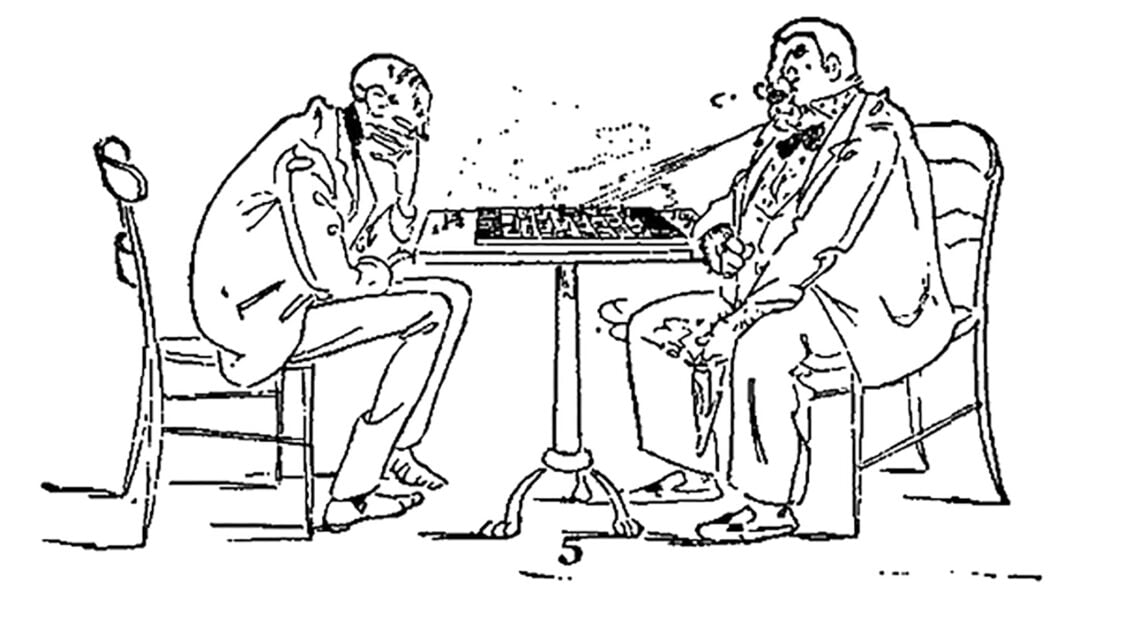From “What Computers Can’t Do,” which appeared in the August 1965 issue of Harper’s Magazine. The complete article—along with the magazine’s entire 174-year archive—is available online at harpers.org/archive.
There is a computer at the Massachusetts Institute of Technology that goes by the engaging name of Pandemonium. The task its creator, Oliver Selfridge, has set for the machine is to recognize letters like R, A, and T. Unfortunately, Pandemonium is somewhat of a dunce.
When rat is written out in capitals (“RAT”), the machine can identify the letters. But write “Rat,” and Pandemonium is stumped. Many computers can make excuses, such as the above letter is ambiguous or, with hubris, the above letter is impossible. But the fact is that Pandemonium is nonplussed by modified forms of R, A, and T. Evidently, it lacks the basic intellectual skill of pattern recognition. Children learn this skill in the crib, but it is almost impossible to teach it to a machine. After twenty years of research, computer experts are forced to admit that pattern recognition is hard to understand and even harder to simulate.
There are some programs that have no use at all except to simulate such human mental activities as logic, solving theorems, and the peculiar type of thinking we call “playing” a game. Arthur Samuel at IBM has even programmed a computer to play checkers; he has been grooming it for a match sometime against the national checkers champion. While it is hard to say exactly what kind of thinking checkers demands, there is no question that the computer “learns”—it remembers moves, changes strategies, and improves from game to game.
Yet there is something dissatisfying about the way computers think. They are exasperatingly rigid, and their intelligence is narrow in scope. They answer some questions but fail on others that are almost identical. One is hard put to name an intellectual skill that computers cannot perform, yet reluctant to say that they really can think. As Selfridge has put it: “Even among those who believe that computers can think, there are few these days—except for a rabid fringe—who hold that they actually are thinking.”
Intelligence, then, is a puzzling phenomenon. Psychologists cannot define it, and neither can the engineers and mathematicians. They can merely judge intelligence by its results. A child is intelligent if he scores well on an IQ test. And a machine would be intelligent if it could score well on Turing’s Imitation Game.
 The Imitation Game is a hypothetical test designed by Alan Turing, who was a mathematician at Manchester University in England. In Turing’s game, an interrogator tries to distinguish between a computer and a man by asking a series of questions. He cannot see the respondents because they are hidden by a screen; he cannot hear them because the questions and answers are transmitted by teletype. All he can do is ask questions to X and to Y; at the end of the game, he must decide whether X is a computer or a man. If the computer can deceive the examiner, then, according to Turing, it may be said to think.
The Imitation Game is a hypothetical test designed by Alan Turing, who was a mathematician at Manchester University in England. In Turing’s game, an interrogator tries to distinguish between a computer and a man by asking a series of questions. He cannot see the respondents because they are hidden by a screen; he cannot hear them because the questions and answers are transmitted by teletype. All he can do is ask questions to X and to Y; at the end of the game, he must decide whether X is a computer or a man. If the computer can deceive the examiner, then, according to Turing, it may be said to think.
Turing envisioned the following conversation:
Q: Please write me a sonnet on the subject of the Forth Bridge.
A: Count me out on this one. I never could write poetry.
Q: Add 34957 to 70764.
A: [After a pause of about thirty seconds] 105621.
Q: Do you play chess?
A: Yes.
Q: I have K at my K1, and no other pieces. You have only K at K6 and R at R1. It is your move. What do you play?
A: [After a pause of fifteen seconds] R-R8 mate.
No computer in existence today could possibly carry on such a conversation. They can add, or count, or play mediocre chess, but none of them can do all these things at once (much less pause artfully so as not to give itself away).
This is not to belittle the remarkable feats that can be performed by computers. A checker-playing machine, for instance, can regularly defeat the man who programmed it. But neither it—nor any other existing computer—can decode your aunt Agatha’s inimitable scrawl. This is depressing to computer experts but something of a comfort for the man who has forgotten whatever he once knew about differential calculus. A human brain, it would seem, is still worth having.


